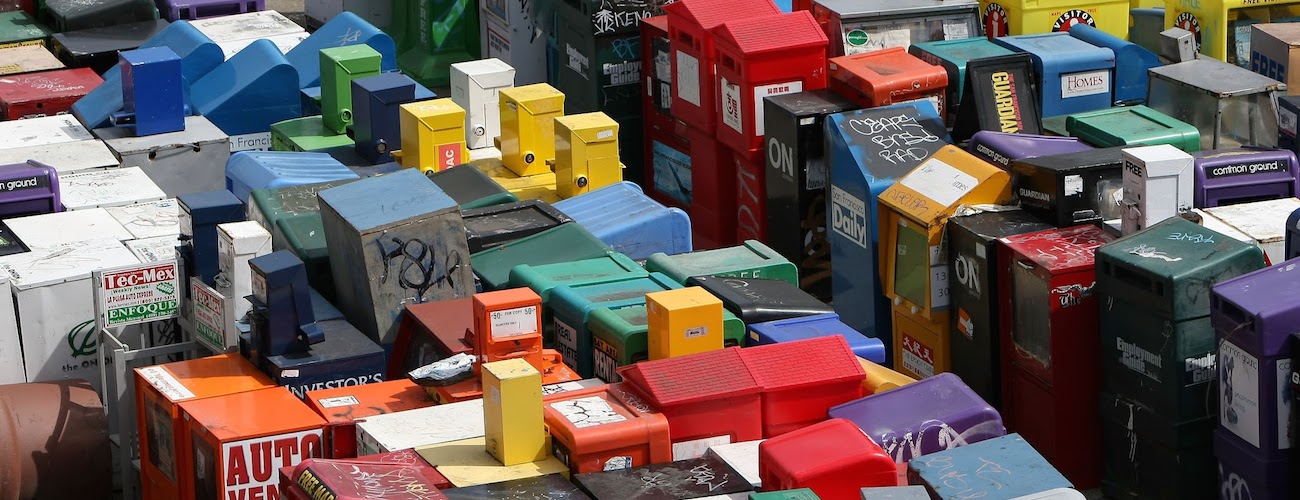Sign up for the daily CJR newsletter.
On March 18, 2020, the staff at Isthmus, a 45 year old alt-weekly newspaper in Madison, Wisconsin, were scrambling to assemble that week’s newspaper for a coronavirus edition; they had just scrapped their original cover story. But after the paper ran the next morning, Isthmus’ owners told staff that the alt-weekly’s best chance for survival was to pause operations indefinitely. Within a week, all 23 full-time employees were laid off. “It was incredibly fast,” said Judith Davidoff, the editor of Isthmus. “I can’t say that any of us thought they were going to shut down that quickly.”
The coronavirus print edition would be Isthmus’ last—at least under its most recent ownership. After limping along digitally with some staff that were rehired through loans from the federal Paycheck Protection Program, Isthmus’ owners decided in July they were no longer interested in owning or publishing the paper. Now Davidoff is in the process of converting the alt-weekly into a nonprofit news organization, relying largely on volunteer labor. She hopes to eventually bring back a print edition, this time with additional help from philanthropic funding and individual donors.
Isthmus converting into a nonprofit is just one of many instances of journalists using the disappearance of local news—exacerbated by industry-wide newsroom cutbacks during the coronavirus pandemic—as an opportunity to rethink what news looks like in their community. Newsrooms are experimenting with alternatives to business models that disproportionately rely on advertising revenue. This model has been seen from Oakland, California to Waterbury, Vermont. However, it’s not clear how much ground the nonprofit news model––which primarily entails philanthropic funding and charitable donations––can make up for in a rapidly shrinking for-profit local news ecosystem in the US. Some experts warn of heightened competition for funding and systemic inequities in philanthropic giving.
Yet overall, the nonprofit news sector appears to be doing well. Last year, Lauren Harris wrote for CJR that unlike their for-profit counterparts, nonprofits proved less vulnerable to the COVID-19 economic downturn. The Knight Foundation declared 2020 the “Year of Nonprofit Local News,” citing the rapid growth of nonprofit news organizations and a business model “tailored for tough times.” The Institute for Nonprofit News, a network of over three hundred nonpartisan, nonprofit news organizations, reported that nonprofit newsrooms have successfully lessened their dependence on foundation grants, tapped into individual giving, and built direct relationships with their audiences. They’ve also found that “nonprofit outlets have launched at a pace of a dozen or more a year since 2008, with 31 INN members launched in 2018-2019.”
Although INN believes it’s too soon to assess the total impact of COVID-19 on the nonprofit news sector, there are already indicators that these outlets can somewhat successfully withstand a major crisis. Magda Konieczna, a journalism professor at Temple University and author of Journalism without Profit, pointed out that of the almost one hundred digital outlets impacted by cutbacks during the pandemic, only one of them—the VT Digger, of Montpelier, Vermont—was a nonprofit. (The VT Digger, which partially relies on advertising revenue, laid off one part-time newsroom staffer and two members of the business staff.) “It’s become increasingly obvious that the pairing of journalism and advertising never really made sense,” said Konieczna. “It sort of worked for a while, but there’s no inherent reason it should work,” she said, pointing to the 2008 financial crash as one of the first major examples of the relationship between journalism and advertising beginning to break down. That year also marked the meteoric rise of independent journalism, in both experimentation with alternative news models and the separation from corporate interests.
An unexpected gain from COVID-19’s impact on newsrooms across the country has been the accelerated innovation with partnerships, news products, and business models, especially in independent newsrooms. The office-less staff at The Current, a six-month old nonprofit newsroom in Coastal Georgia, for example, is exploring a partnership with their local libraries, where they could have a free space to work and form relationships with the community via office hours, book clubs, and more. Susan Catron, managing editor at The Current, said that being a nonprofit has also allowed them to be more intentional about the story-telling methods they use. “It’s forcing us to find any number of ways to tell any number of stories because people digest information differently.” In February, The Current published a piece that commemorated the fifty-year anniversary of Woodbine, Georgia’s Thiokol explosion, which embedded archival images, a first-hand video account from a survivor, and photo galleries into the written report. And in order to engage more directly with the community during the pandemic, countless news organizations have launched newsletters, including Isthmus. Isthmus’ Davidoff launched a newsletter in April before the decision to convert to a nonprofit newsroom, and has since been documenting the alt-weekly’s transformation.
Nonprofit business models, however, require that newsroom leaders double as nonprofit administrators. Grant writing is a time-consuming and acquired skillset, much different from journalism. Both The Current’s Catron and Isthmus’ Davidoff have attended grant writing courses; still, Catron said reporting time is often spent on grant proposals. Ultimately she sees all the nonprofit organizational work she does as an investment. “At no point do I want to sound ungrateful for that because we’re shooting the long game here,” said Catron. “Every moment I spend on a webinar, on a training program, is an investment and down the road, I’m hoping it will pay for ways to get more funding.”
As the nonprofit sector grows, some warn of increased competition for philanthropic funding. In a recent report, Anya Schiffrin acknowledges philanthropy’s role in the saving of hundreds, if not thousands, of media outlets around the world. And although that funding is badly needed, she argues, it won’t solve the problem of long-term financial viability or help mend an ailing local news ecosystem. Schiffrin writes, “to be blunt, funding a collection of small startups that may wind up competing with each other, and are not sustainable over the long term, isn’t a solution.” Konieczna, for her part, doesn’t believe that all competition is inherently bad. “Foundations have done a good job encouraging a more community oriented, engaged kind of journalism,” she said, because such organizations require innovation and impact in exchange for funding.
The uneven distribution of philanthropic funds has also revealed some of the inequities in nonprofit news. According to a recent report on the health of local news ecosystems by Impact Architects, a consulting firm that measures impact for media organizations and nonprofits, there’s a “significant inequity in philanthropic investment in journalism and media.” Of the nine cities Impact Architects identified as having “successful initiatives contributing to healthy local news and information ecosystems,” philanthropic giving ranged from over $50 per capita in Macon-Bibb County, Georgia to less than $1 per capita in Youngstown, Ohio. At the Knight Foundation’s Local News 2021 forum, Field Foundation president Angelique Power highlighted how critical it is to take “funding deserts” into account when discussing “news deserts.” The Field Foundation found that in Chicago, about a third of all media organizations are in communities where Black people and people of color make up more than ninety percent of the population, yet have received only six percent of philanthropic funding over the past ten years. That translates into a $60 million shortfall in Chicago alone, according to Power.
So far, there’s not much indication that philanthropic funding for journalism is bottoming out. The Lenfest Institute and Knight Foundation dedicate many of their resources to creating sustainable solutions for journalism. Social media platforms also continue to funnel money into local news, as documented extensively by the Tow Center. Last spring, both the Google News Initiative and the Facebook Journalism Project separately launched local news relief funds in response to the pandemic, on top of the $300 million they respectively invested in past years to address the ongoing local news crisis. However, Konieczna doesn’t believe it’s reasonable to expect indefinite support or even a “perfect match between foundations and the needs of democracy” due in part to program officers’ own interests in how they want to shape news.
For now, organizations such as LION Publishers, an association of independent news entrepreneurs, are building resources for news outlets trying to achieve sustainability and implement training programs for others looking to launch news publications. (LION measures sustainability by financial health, journalistic impact, and operational resilience). Last July, when LION announced their Google News Initiative Startups Boot Camp for aspiring news entrepreneurs—an intensive six-week coaching program for 24 selected news start-ups—Deputy Director Anika Anand was nervous there wouldn’t be much interest given the stressful circumstances of the pandemic. Instead, they received 259 applications in only six weeks. Anand said that many in the cohort told her that COVID-19 presented the perfect opportunity to create an independent news startup. “Financially it may be a riskier decision than normal,” Anand said, “but if you’re an entrepreneur, you realize where there is disruption, there is opportunity.” Anand believes that the pandemic has not only shown newsmakers the valuable role they can play in their communities as publishers and information curators, but it’s also demonstrated to the communities they’re serving what kind of value news outlets can provide for them in times of crisis.
Despite a ninety-five percent drop in advertising revenue within a single week at Isthmus in March 2020, Davidoff said that some of their advertising has returned and they regularly field inquiries about a future print edition from both advertisers and readers. The alt-weekly also has a reader donation program in place and received its first grant from the American Press Institute for election-related coverage, a major accomplishment as they await their official 501(c)3 status. “It’s a paper that really is Madison,” said Davidoff. “Many people say Madison isn’t Madison without Isthmus.”
Update: We have updated the language to reflect that “some,” rather than “much,” of Isthmus’ advertising revenue has returned, because their total advertising revenue is still significantly lower than it was prior to the pandemic.
Has America ever needed a media defender more than now? Help us by joining CJR today.







